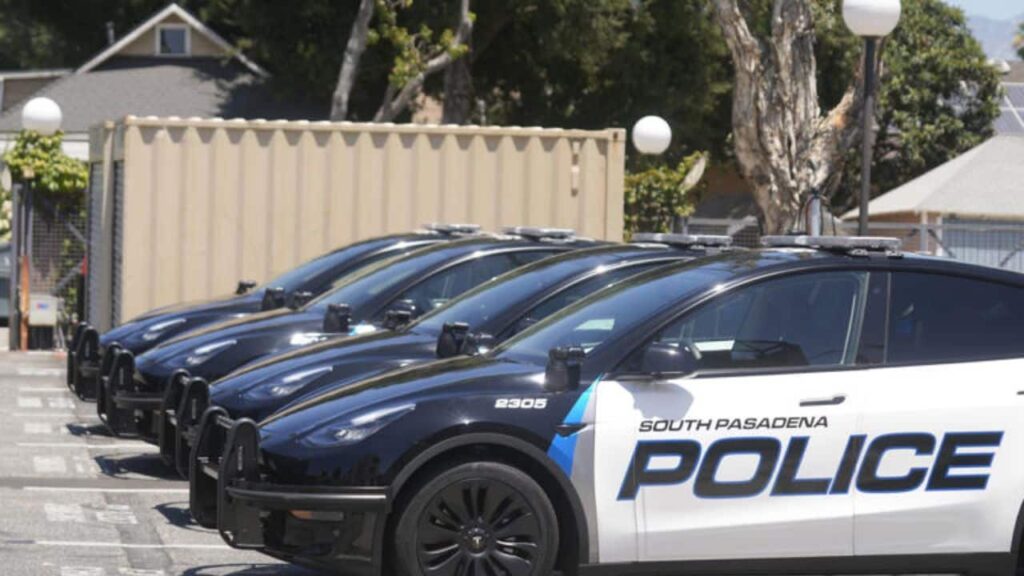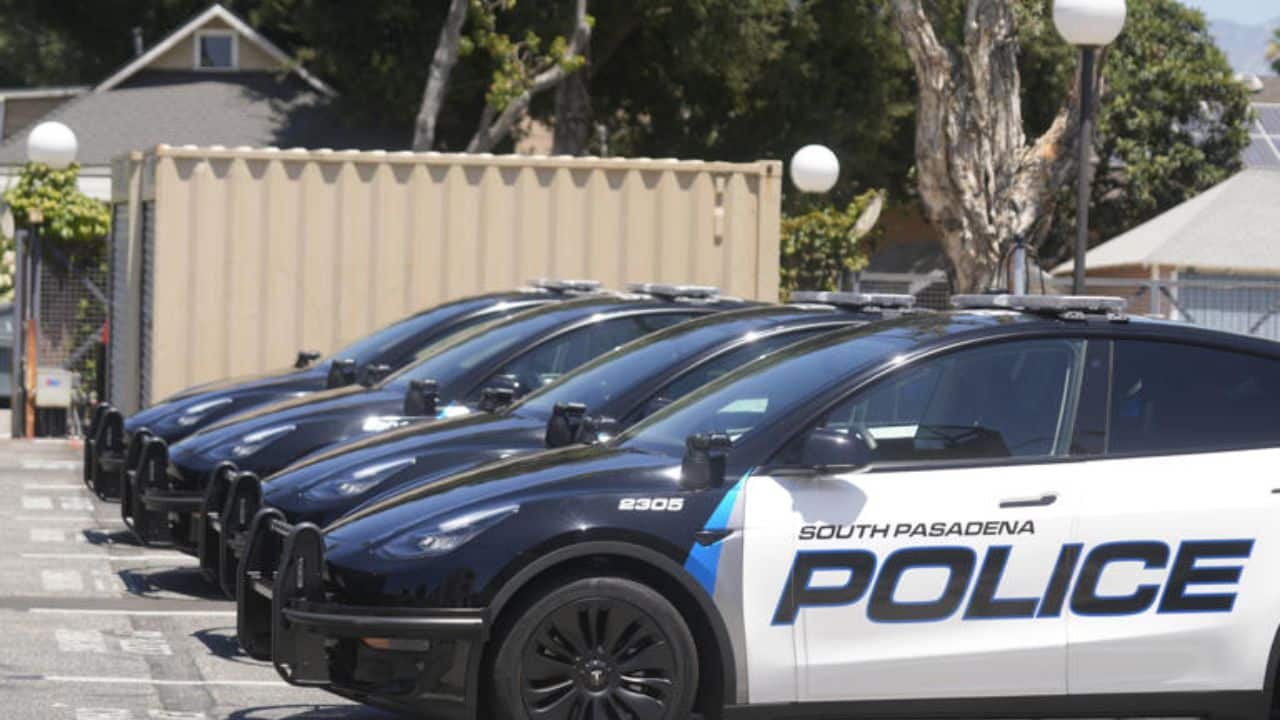South Pasadena police fleet, all-electric police cars, Tesla police vehicles, electric vehicle fleet, EV police cars, sustainable policing, climate change, air quality improvement, South Pasadena Teslas, environmental impact
Discover how South Pasadena became the first U.S. city to replace its entire police patrol car fleet with electric vehicles. Learn about the environmental, financial, and operational benefits of this groundbreaking initiative aimed at reducing emissions and combating climate change.

California City Unveils Nation’s First All-Electric Vehicle Police Fleet
A groundbreaking move has been made by South Pasadena, a city on the edge of Los Angeles, as it becomes the first in the United States to replace its entire police patrol car fleet with electric vehicles. The unveiling of this fleet of 20 new Teslas marks a significant step towards reducing emissions, protecting public health, and combating climate change.
The Transition to Electric Vehicles
South Pasadena’s decision to switch from traditional gas-guzzling police cruisers to electric vehicles (EVs) was driven by the city’s commitment to sustainability and improving air quality. The fleet consists of 10 Tesla Model Ys for patrol duties and 10 Tesla Model 3s for detective and administrative purposes. Each vehicle has been customized to meet the specific needs of police operations.
Environmental and Health Benefits
Police vehicles typically idle for extended periods during traffic stops or emergency responses, significantly contributing to emissions. Michael Cacciotti, a South Pasadena city council member and regional air quality official, emphasized the importance of this transition, particularly in the Los Angeles area, which has the worst air quality in the nation. “We hope other police departments in the region and state will make the switch, too,” Cacciotti stated.
Financial Implications
The total cost for the new fleet is $1.85 million, with more than half of this amount covered by energy providers Southern California Edison, the Clean Power Alliance, and the Mobile Source Air Pollution Reduction Review Committee. Mayor Evelyn Zneimer highlighted that the transition to electric vehicles is expected to save the city approximately $4,000 annually per vehicle on energy costs. Additionally, significant savings are anticipated on maintenance costs, including brakes, oil changes, and air filters. Police Chief Brian Solinsky noted that the operational cost per mile with the electric fleet would be at least half of what it was with gas-powered vehicles.
Broader Impact and Future Plans
The move by South Pasadena sets a precedent for other cities and police departments across the nation. While other cities, such as nearby Anaheim, have introduced some electric vehicles into their fleets, South Pasadena is the first to go entirely electric. The police department has been in contact with about 35 other agencies across the U.S. to share experiences and insights on incorporating Teslas into their fleets.
The new fleet will utilize electric vehicle chargers installed at City Hall, ensuring that the police vehicles remain fully operational and ready for duty. This initiative aligns with California’s Advanced Clean Fleets rule, which mandates that public agencies ensure 50% of their vehicle purchases are zero-emissions starting this year and 100% by 2027. Although this rule exempts police cars and other emergency vehicles, South Pasadena’s proactive approach demonstrates a commitment to exceeding these requirements.
Air Quality and Climate Change
The Los Angeles-Long Beach area is notorious for its poor air quality, ranking first in the country for ozone pollution (smog) and sixth for annual particle pollution, according to the American Lung Association. The transition to electric vehicles is a crucial step in addressing these environmental issues. Reducing carbon dioxide emissions not only improves air quality but also mitigates the effects of climate change, which has been linked to increasingly severe wildfires in the region.
Community and Operational Benefits
Beyond the environmental and financial benefits, the shift to an all-electric police fleet brings several advantages to the community and police operations. Electric vehicles provide a quieter and more efficient mode of transportation, enhancing the quality of life for residents. The reduced noise pollution from electric patrol cars can be particularly beneficial during nighttime operations, allowing officers to perform their duties without disturbing the community.
Moreover, the advanced technology in Tesla vehicles, such as their Autopilot and safety features, enhances the safety and effectiveness of police operations. These vehicles are equipped with state-of-the-art navigation and communication systems, ensuring that officers can respond to incidents swiftly and efficiently.
A Model for the Future
South Pasadena’s initiative serves as a model for other cities and municipalities considering similar transitions. The successful implementation of an all-electric police fleet demonstrates that it is feasible to balance environmental sustainability with operational efficiency and cost savings. By taking this bold step, South Pasadena is leading the way in creating a cleaner, healthier, and more sustainable future for its residents and setting an example for communities nationwide.
Conclusion
The unveiling of South Pasadena’s all-electric police fleet marks a significant milestone in the journey towards sustainability and improved public health. By replacing traditional gas-powered police cruisers with electric vehicles, the city is addressing critical environmental issues and setting a new standard for law enforcement agencies across the country. As more cities observe the benefits of this transition, it is likely that the adoption of electric vehicles in police fleets will become more widespread, contributing to a cleaner and more sustainable future for all.
Read More
